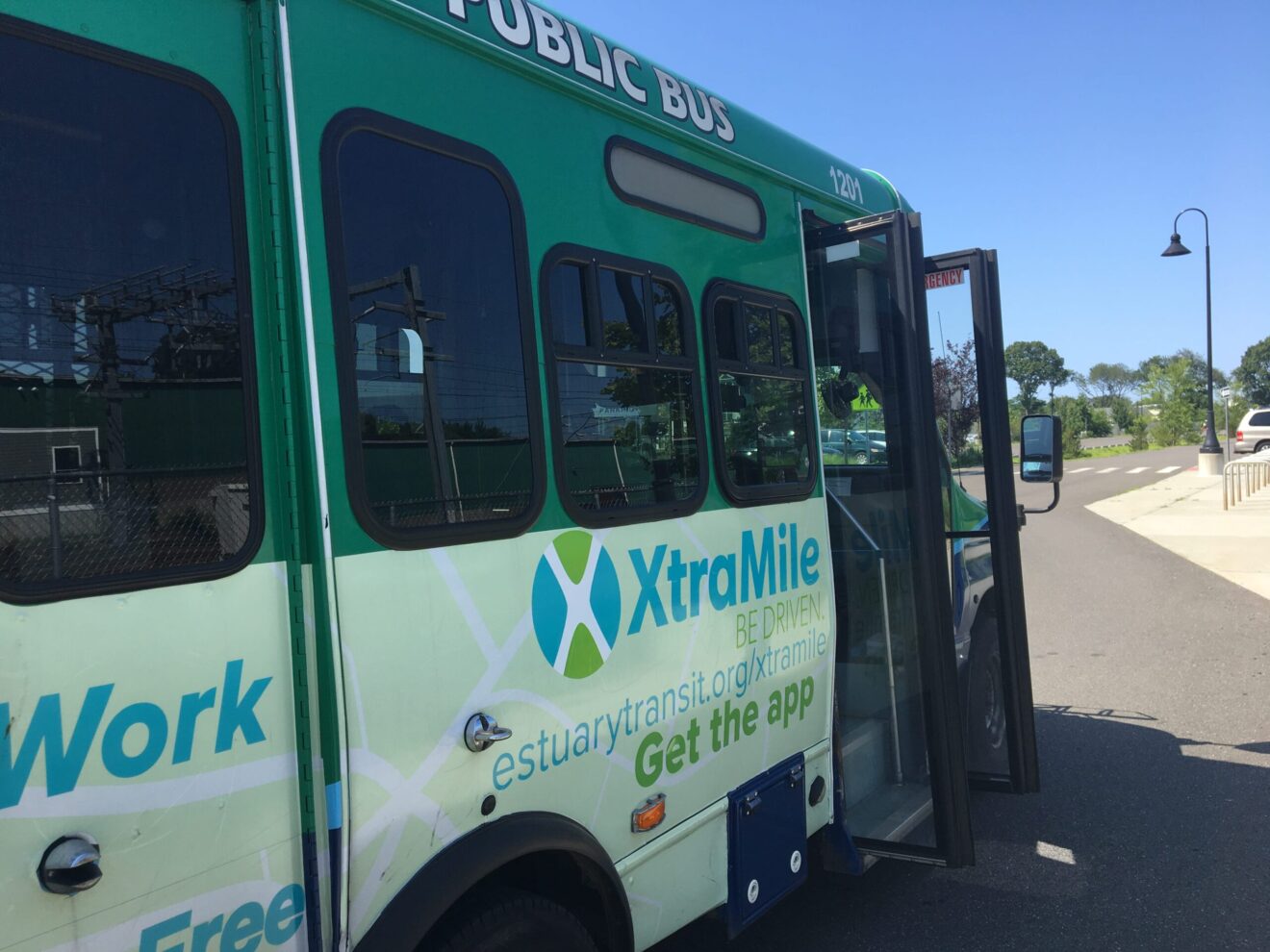Estuary Transit District’s Xtramile service pilot will continue to provide an on-demand, alternative transportation option for an additional three months to residents and visitors in Old Saybrook, Westbrook, Essex and Centerbrook with financial assistance from the Department of Transportation.
“We are geared around the first mile, last mile dilemma surrounding train stations,” said Joe Comerford, the executive director of Estuary Transit District. “Trains do a great job of getting people to the station, but what do they do after that, especially in unwalkable areas.”
Estuary Transit provides an 8-passenger bus with wheelchair accessibility unavailable from ride-sharing services like Uber or Lyft. During peak hours Estuary Transit also circulates cars. Xtramile is not intended as competition for Uber and Lyft, but as an alternative for populations, including the disabled and elderly, that are often not well served by other services.
“The oversight and licensing is much stricter for public transit drivers than it would be for an Uber or Lyft,” said Sam Gold, the executive director of the Lower Connecticut River Valley Council of Governments. “All of the drivers are drug and alcohol tested, they have insurance in Connecticut, and they’re all trained on how to deal with passengers and people with disabilities. That’s not something you’re going to get from Uber or Lyft.”
The service can be accessed through a smart phone application, with a phone call, or by boarding a nearby bus — flexibility that’s important for populations without access to smart phone technology. 36 percent of rides are currently booked by call-ins, Comerford said.
“It actually started out when the town of Old Saybrook asked us about providing transportation to this industrial park,” Comerford said as he gestured to the industrial park located directly behind Old Saybrook’s train station. Despite its proximity, there is no easy way to walk from the train station to the industrial park or the many other businesses located just behind it. “Even though you could throw a stone to it, you can’t get there.”

The businesses located near – but near enough – the train station include a call center, distribution center and others that employ lower-skilled, entry-level workers.
“This area is too expensive for lower-wage jobs, so being able to get people in from New Haven and New London is critical to them,” Comerford said. “There weren’t enough people to justify a shuttle and there are other places we knew about too. It’s a typical suburban problem that we just don’t have one really dense core of jobs.”
As opposed to a shuttle service to all these places, Estuary Transit with help from the Lower Connecticut River Council of Governments and $25,000 in funding from the Federal Transit Administration and the state Department of Transportation studied the possibility of putting on-demand, micro-transit into place as a solution. The data modeling, completed this winter, helped determine the service area for the pilot.
“It seemed to be the thing that made sense because you only go where people are, you cut your head ways,” Comerford said. “You’re not doing a loop for maybe somebody’s here maybe they’re not.”
The Xtramile has already started to average more rides per hour than the local dollar ride service, with 3 to 4 rides compared to 1 to 2. In the first six weeks of operation they had 250 unique users. On July 13, the Xtramile reached 1,000 rides, and every week the number of rides continues to increase, Comerford said. During the month of July there has been on average 30 to 40 rides requested per day. The service is available from 6 a.m. to 8 p.m. Monday through Friday and 7:30 a.m. to 6 p.m. on Saturday.
“The reason you have to constrain the area is because if you’re going to allow people to request rides to or from anywhere, it kind of limits the places you can go,” Gold said. “If someone asked for a ride to Haddam it would take a long time and take the bus out of circulation. It’s a compromise between providing wait times that are not unreasonable, while being able to take the bus wherever you want.”
For the first three months of the pilot the Estuary Transit District has spent about $25,000, averaging approximately $10 per trip, according to Gold and Comerford.
The DOT plans to use the results of the pilot study in Old Saybrook to determine solutions for other areas in the state, Gold said. RiverCOG has been working on a transportation study and will be adding rider experience survey results from Xtramile users to that research.
“We want to learn. Why are they choosing to use this, what was going to be your alternative?” Gold said. “Is it taking the place of a bus trip? Is it taking the place of a car trip? Are they commuting to work? Are they doing this for fun? We want to understand who is the market here.”
Currently, there is only one other on-demand, micro-transit public ride sharing service operating in the state. The program is in Norwalk, and unlike Xtramile, it is geared toward weekend entertainment.
“It’s really about getting to and from bars — a very different population and model than the one in Old Saybrook,” Gold said.
Following completion of the pilot, Estuary Transit is planning on continuing the service but with a fee for all users. The fee would be based on a flat-fare system similar to their other current services.
“Nationally we are seeing a decrease in bus ridership because young people want the bus on their schedule, not on the bus’ schedule. That’s what they expect now,” Comerford said. “This program will help to meet those shifting expectations.”

